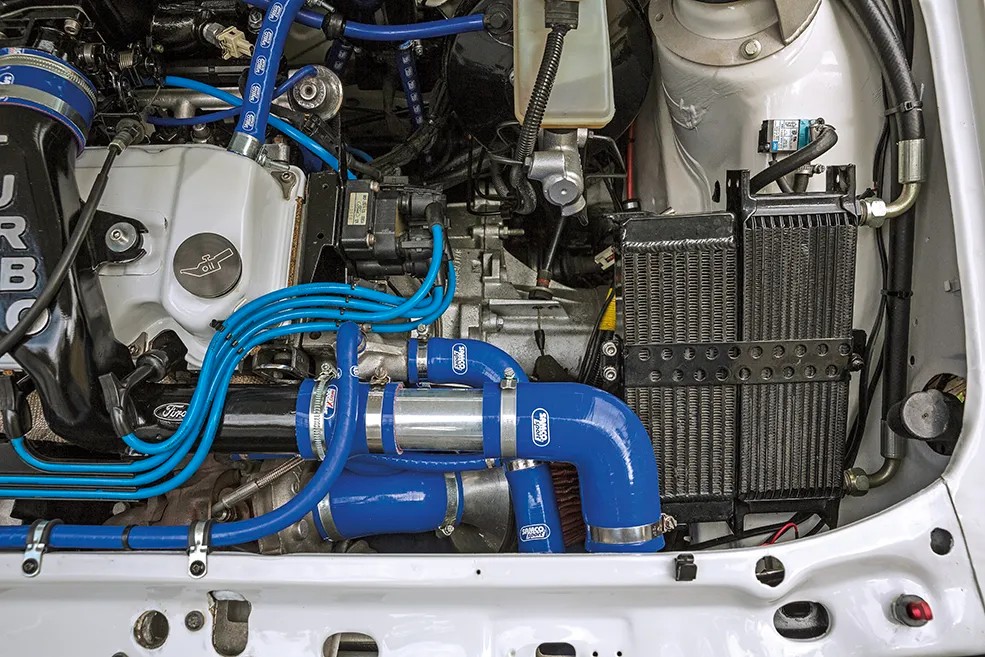
Selecting the right transmission oil cooler for your vehicle is a decision that can significantly impact your vehicle’s performance and longevity. It’s not just about choosing a random cooler; it’s about finding the perfect fit that ensures optimal cooling for your specific vehicle and transmission type. In this comprehensive guide, we will delve into the essential factors to consider when choosing a transmission oil cooler and help you make an informed decision.
Why is Choosing the Right Transmission Oil Cooler Important?
Before we dive into the selection process, let’s understand why having the right transmission oil cooler is crucial. Transmission fluid plays a vital role in your vehicle’s operation. It lubricates moving parts, prevents overheating, and facilitates smooth gear changes. However, as it operates, transmission fluid generates heat, which can lead to reduced performance and even permanent damage to your transmission if not managed properly.
This is where a transmission oil cooler comes into play. It helps dissipate excess heat, keeping your transmission fluid at the optimal temperature. This ensures that your transmission operates efficiently, extends its lifespan, and prevents costly repairs. Now, let’s explore how to choose the right one.
Factors to Consider When Choosing a Transmission Oil Cooler
1. Vehicle Compatibility
The first step in selecting a transmission oil cooler is ensuring compatibility with your vehicle. Different makes and models have varying cooling needs. For instance, if you drive a Ford Ranger PX with a 6-speed transmission, you’ll need a cooler that is suitable for this specific transmission.
A Ford Ranger PX equipped with a 6-speed transmission is a robust vehicle often used for heavy-duty tasks, towing, or off-road adventures. In such demanding conditions, the transmission can generate significant heat, potentially leading to overheating and premature wear. This is precisely why you need a dedicated Ford Ranger PX 6 Speed Transmission Oil Cooler. It’s an essential component that efficiently dissipates excess heat from the transmission fluid, maintaining optimal operating temperatures. By doing so, it ensures smoother gear changes, prolongs the transmission’s lifespan, and ultimately enhances the overall performance and durability of your Ford Ranger PX, making it a vital addition for anyone who values their vehicle’s reliability and longevity.
Similarly, if you own a LandCruiser 200 series vehicle, you’ll need a transmission oil cooler for 200 series that suits its requirements. Likewise, if you drive a Colorado, you’ll want to select a cooler optimized for the transmission in that vehicle.
2. Size Matters
Transmission oil coolers come in various sizes, and choosing the right size is crucial. A larger cooler is not necessarily better; it must match your vehicle’s cooling requirements. A cooler that’s too small won’t effectively dissipate heat, while one that’s too large may not fit your vehicle’s available space or cooling needs.
When you purchase a model specific cooler rather than a generic cooler you can be sure the amount of cooling is engineered to suit your vehicle precisely. Configurations of cooler include single cooler, dual cooler (one behind the other), and twin coolers (side by side coolers).
3. Cooling Efficiency
The efficiency of a transmission oil cooler is determined by its design and construction. Coolers can feature cooling fins, plates, or both. Understanding the differences between these designs is crucial.
Cooling fins are like tiny radiators that dissipate heat quickly, making them ideal for heavy-duty applications. Plates, on the other hand, have a larger surface area and are more efficient at cooling under normal driving conditions. Some coolers even combine both designs for optimal cooling performance.
4. Fan-Assisted or Passive
Transmission oil coolers can be fan-assisted or passive. Fan-assisted coolers come with built-in fans. Passive coolers rely on airflow from the vehicle’s movement. A well designed cooler can cool effectively using passive cooling from airflow. This has the advantage of not introducing additional moving parts that can fail.
5. Material and Corrosion Resistance
The material of the cooler is crucial for durability and longevity. Look for coolers made from materials like aluminum or stainless steel, which are resistant to corrosion and rust. A high quality cooler may also be finished with a rust and wear resistant coating such as zinc and Mannex Black. This ensures your cooler remains effective and lasts for the long haul.
6. Mounting Options and Locations
Transmission oil coolers can be mounted in various locations, such as in front of the radiator, behind the grille, or even inside the radiator. The location can impact cooling efficiency, so it’s essential to choose a spot that provides adequate airflow.
Avoid flimsy multi-piece mounts that are prone to fail. A better option is a single piece mount which is much more robust.
7. Temperature Control
Some transmission oil coolers come with temperature control features like thermostats or bypass valves. These mechanisms help regulate the temperature of the transmission fluid more effectively. Depending on your driving conditions, these features can be highly beneficial.
Final Thoughts
Choosing the right transmission oil cooler for your vehicle is a critical decision that can significantly impact your vehicle’s performance and longevity. Consider factors like the suitability of the cooler for your vehicle, size, cooling efficiency, fan-assisted vs. passive, material, mounting options, and temperature control when making your decision.
Remember that consulting with experts or professional installers is always a wise choice to ensure you get the perfect fit for your vehicle. By investing in the right transmission oil cooler, you’ll enhance your vehicle’s performance, protect your transmission, and enjoy worry-free driving for years to come.


